
The White baronetcy, of Tuxford and Wallingwells in the County of Nottingham, was created in the Baronetage of the United Kingdom on 20 December 1802 for Thomas Woollaston White, with remainder to the heirs male of his father. [1]

The White baronetcy, of Tuxford and Wallingwells in the County of Nottingham, was created in the Baronetage of the United Kingdom on 20 December 1802 for Thomas Woollaston White, with remainder to the heirs male of his father. [1]
The heir apparent to the baronetcy is Christopher David Nicholas White (born 1972), eldest son of the 6th Baronet. [6]
Male-line family tree | ||||||||||||||||||||||||||||||||||||||||||||||||||||||||||||||||||||||||||||||||||||||||||||||||||||||||||||||||||||||||||||||||||||||||||||||||||||||||||||||||||||||||||||||||||||||||||||||||||||||||||||||||||||||||||||||||
|---|---|---|---|---|---|---|---|---|---|---|---|---|---|---|---|---|---|---|---|---|---|---|---|---|---|---|---|---|---|---|---|---|---|---|---|---|---|---|---|---|---|---|---|---|---|---|---|---|---|---|---|---|---|---|---|---|---|---|---|---|---|---|---|---|---|---|---|---|---|---|---|---|---|---|---|---|---|---|---|---|---|---|---|---|---|---|---|---|---|---|---|---|---|---|---|---|---|---|---|---|---|---|---|---|---|---|---|---|---|---|---|---|---|---|---|---|---|---|---|---|---|---|---|---|---|---|---|---|---|---|---|---|---|---|---|---|---|---|---|---|---|---|---|---|---|---|---|---|---|---|---|---|---|---|---|---|---|---|---|---|---|---|---|---|---|---|---|---|---|---|---|---|---|---|---|---|---|---|---|---|---|---|---|---|---|---|---|---|---|---|---|---|---|---|---|---|---|---|---|---|---|---|---|---|---|---|---|---|---|---|---|---|---|---|---|---|---|---|---|---|---|---|---|---|
| ||||||||||||||||||||||||||||||||||||||||||||||||||||||||||||||||||||||||||||||||||||||||||||||||||||||||||||||||||||||||||||||||||||||||||||||||||||||||||||||||||||||||||||||||||||||||||||||||||||||||||||||||||||||||||||||||

Viscount Hardinge, of Lahore and of Kings Newton in the County of Derby, is a title in the Peerage of the United Kingdom. It was created in 1846 for the soldier and Tory politician Sir Henry Hardinge. His son, the second Viscount, represented Downpatrick in Parliament. His great-great-grandson, the sixth Viscount, succeeded a distant relative as eighth Baronet, of Belle Isle in the County of Fermanagh, in 1986. This title had been created in the Baronetage of the United Kingdom 1801 for Richard Hardinge. He was the third son of Nicolas Hardinge, younger brother of Reverend Henry Hardinge and uncle of the latter's third son Henry Hardinge, 1st Viscount Hardinge. The baronetcy was created with special remainder to the heirs male of Richard Hardinge's father.
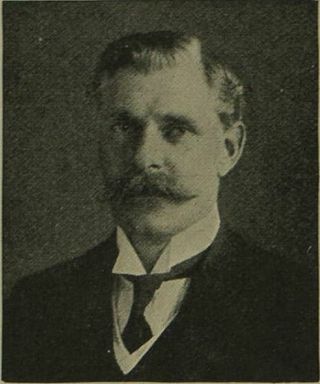
Baron Islington, of Islington in the County of London, was a title in the Peerage of the United Kingdom. It was created in 1910 for Sir John Poynder-Dickson, 6th Baronet, Governor of New Zealand from 1910 to 1912.
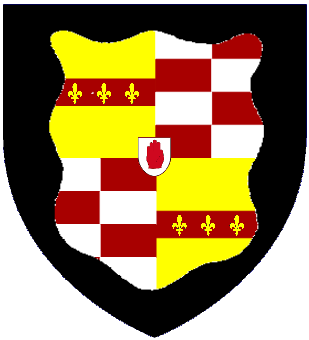
The Barrett-Lennard Baronetcy, of Belhus in the County of Essex, is a title in the Baronetage of the United Kingdom. It was created on 30 June 1801 for Thomas Barrett-Lennard, subsequently Member of Parliament for Essex South. He was the illegitimate son and testamentary heir of Thomas Barrett-Lennard, 17th Baron Dacre. He was succeeded by his grandson, the second Baronet, the son of Thomas Barrett-Lennard, Member of Parliament for Maldon. His son, the third Baronet, was childless and was succeeded by his younger brother, the fourth Baronet. This line of the family failed on the death in 1977 of his son, the fifth Baronet, who died without male issue. The late Baronet was succeeded by his third cousin once removed, the sixth Baronet. He was the son of Sir Fiennes Cecil Arthur Barrett-Lennard, Chief Justice of Jamaica, son of Captain Thomas George Barrett-Lennard, son of the first marriage of George Barrett-Lennard, son of John Barrett-Lennard, second son of the first Baronet. The sixth Baronet was a Catholic clergyman. As of 2014 the title is held by his second cousin, the seventh Baronet, who succeeded in 2007. He is the grandson of Trenchard Barrett-Lennard, son of the aforementioned George Lennard-Barrett by his second marriage. As of 31 December 2013 the present Baronet has not successfully proven his succession and is therefore not on the Official Roll of the Baronetage, with the baronetcy considered vacant since 2007.
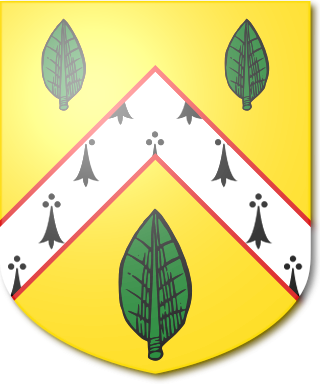
The Couper Baronetcy is a title in the Baronetage of the United Kingdom. It was created on 23 June 1841 for George Couper. He was a colonel in the Army and fought in the Peninsular War, served as Military Secretary to the Governor Generals of Canada, Sir James Kempt and Lord Durham, and was Comptroller of the Household and Equerry to Her Royal Highness the Duchess of Kent. The second Baronet was an administrator in India and served as Governor of the North-West Provinces between 1877 and 1882. Another member of the family to gain distinction was James Kempt Couper, second son of the first Baronet. He was a general in the Army.

The Medlycott Baronetcy, of Ven House in the County of Somerset, was a title in the Baronetage of the United Kingdom. It was created on 3 October 1808 for William Medlycott, Member of Parliament for Milborne Port from 1790 to 1791. The family descended from James Medlycott, of Ven House, who represented Milborne Port in the House of Commons between 1710 and 1722. His son Thomas Medlycott died without surviving male issue in 1763 and left his estates to his maternal nephew Thomas Hutchings, who adopted the surname of Medlycott. His son was the first Baronet. The baronetcy became extinct with the death of the 9th Baronet in 2021.
The Hartwell Baronetcy, of Dale Hall in the County of Essex, is a title in the Baronetage of the United Kingdom. It was created on 26 October 1805 for Admiral Francis Hartwell.

The Price, later Rugge-Price Baronetcy, of Spring Grove in Richmond in the County of Surrey, is a title in the Baronetage of the United Kingdom. It was created on 2 February 1804 for Charles Price, Member of Parliament for the City of London from 1802 to 1812 and Lord Mayor of London from 1802 to 1803. The fifth Baronet assumed in 1874 by Royal licence the additional surname of Rugge. As of 28 February 2014 the present Baronet has not successfully proven his succession and is therefore not on the Official Roll of the Baronetage, with the baronetcy considered dormant since 2000.
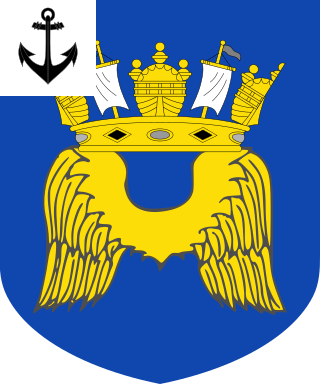
The Seymour, later Culme-Seymour Baronetcy, of High Mount in the County of Cork and Friery Park in the County of Devon, is a title in the Baronetage of the United Kingdom. It was created on 31 May 1809 for the naval commander Admiral Michael Seymour. The second Baronet assumed the additional surname of Culme, which was that of his first wife. The third Baronet was also an admiral in the Royal Navy and notably commanded the Channel Squadron from 1890 to 1892 and the Mediterranean Fleet from 1893 to 1896. The fourth Baronet was a vice admiral in the Royal Navy.

The Welby Baronetcy, of Denton Manor in the County of Lincoln, is a title in the Baronetage of the United Kingdom.

The Wedderburn, later Ogilvy-Wedderburn Baronetcy, of Balindean in the County of Perth, is a title in the Baronetage of the United Kingdom created in 1803.

The Fowke Baronetcy, of Lowesby in the County of Leicester, is a title in the Baronetage of the United Kingdom. It was created on 7 February 1814 for Frederick Gustavus Fowke of Lowesby Hall, Lowesby, near Leicester. He was the son of Lieutenant-General Sir Thomas Fowke, Groom of the Bedchamber to the Duke of Cumberland. His grandfather was Lieutenant-General Thomas Fowke, Governor of Gibraltar. The family surname is pronounced "Foke".

The Pigot Baronetcy, of Patshull Hall in the County of Stafford, is a title in the Baronetage of Great Britain. It was created on 5 December 1764 for the politician and colonial administrator George Pigot, with remainder to his brothers General Robert Pigot and Admiral Hugh Pigot, and remains extant. On 19 January 1766 Pigot was further honoured when he was raised to the Peerage of Ireland as Baron Pigot, with normal remainder to the heirs male of his body. Lord Pigot was unmarried and on his death in 1777 the barony became extinct. He was succeeded in the baronetcy according to the special remainder by his brother, Robert, the second Baronet. He was a distinguished soldier.

The Smith, later Smith-Marriott Baronetcy, of Sydling St Nicholas in the County of Dorset, is a title in the Baronetage of Great Britain. It was created on 1 June 1774 for John Smith, High Sheriff of Dorset in 1772. The second Baronet married Elizabeth Anne, daughter of Reverend James Marriott. The fourth Baronet assumed by Royal sign-manual the additional surname of Marriott. The fifth Baronet was High Sheriff of Dorset in 1873.

The Wardlaw Baronetcy, of Pitreavie in the County of Fife, is a title in the Baronetage of Nova Scotia. It was created on 5 March 1631 for Henry Wardlaw, Chamberlain to Anne of Denmark, consort of James VI, with remainder to heirs male whatsoever. He had acquired Pitreavie in 1606 and this was erected into a barony in 1627. As of 13 October 2008 the presumed twenty-first and the twenty-second Baronets have not successfully proven succession and are therefore not on the Official Roll of the Baronetage, with the baronetcy considered dormant since 1983. The poet Elizabeth, Lady Wardlaw was the wife of the fourth Baronet.
There have been three baronetcies created for personswith the surname Elphinstone, two in the Baronetage of Nova Scotia and one in the Baronetage of the United Kingdom. As of 2008 two of the creations are extant while one is dormant.

The Astley, later Astley-Corbett, later Astley Baronetcy, of Everley in the County of Wiltshire, was created in the Baronetage of the United Kingdom on 15 August 1821 for John Astley, Member of Parliament for Wiltshire and Wiltshire North. He was a descendant of Thomas Astley, younger brother of the first Baronet of Patshull. The third Baronet represented Lincolnshire North in Parliament as a Conservative. He married Eleanor Blanche Mary, daughter of Thomas George Corbett. Their eldest son, Francis, the fourth Baronet, assumed by Royal licence the additional surname of Corbett in 1890. His grandson, Francis, the fifth Baronet, was killed in action in World War II.

The Lees Baronetcy, of Blackrock in the County of Dublin, was created in the Baronetage of the United Kingdom on 30 June 1804 for the soldier and politician John Lees.
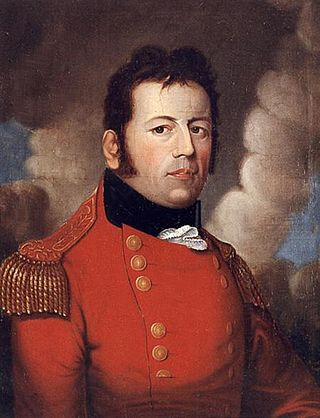
The Prevost baronetcy, of Belmont near Southampton in Hampshire, is a title in the Baronetage of the United Kingdom. It was created on 6 December 1805 for the soldier and colonial administrator Lieutenant-General George Prevost. He was Governor General of British North America from 1812 to 1815. After his death in 1816 his widow Lady Prevost declined the offer of a peerage, as she did not consider herself and her family to have sufficient means to support the dignity. Prevost was the son of General Augustine Prevost, himself a distinguished soldier, who had emigrated to England from Geneva, Switzerland.
The Campbell baronetcy, of St Cross Mede, Winchester, Hampshire, was created in the Baronetage of the United Kingdom on 22 May 1815 for the soldier Guy Campbell. The title was granted in honour of his father, Colin Campbell, wartime Governor of Gibraltar, and was created with remainder to the heirs male of his father.

The Roberts baronetcy, of Britfieldstown in the County of Cork and of the City of Cork, was created in the Baronetage of the United Kingdom on 20 September 1809 for Thomas Roberts, son of Randal Roberts of Britfieldstown.